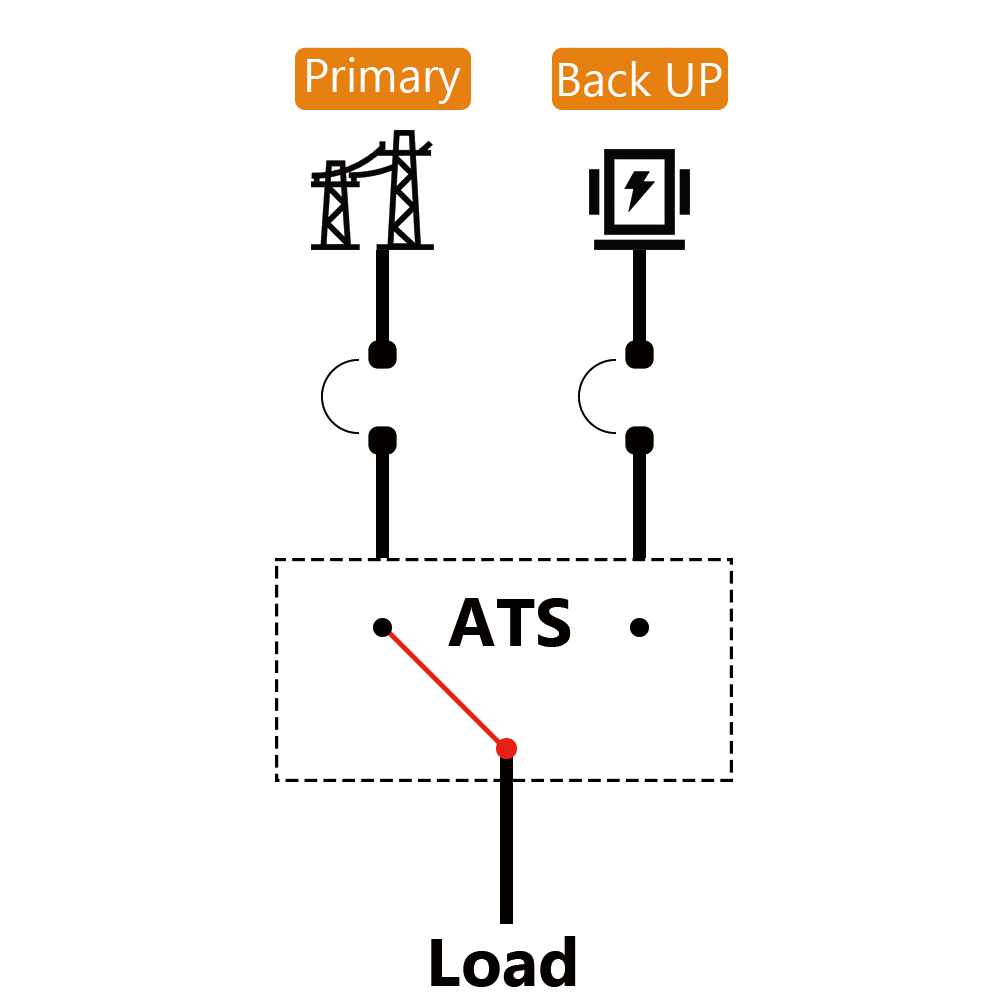BETTER TOUCH BETTER BUSINESS
Contact Sales at Fangpusun.
What is an automatic transfer switch(ATS)?
An Automatic Transfer Switch (ATS) is a critical component in backup power systems. It's a device that automatically transfers power supply from a primary source to a backup or secondary source when there's a failure or interruption in the primary source. These switches are commonly used in scenarios where uninterrupted power supply is crucial, such as in data centers, hospitals, telecommunications facilities, and other critical infrastructure.
The primary function of an ATS is to ensure seamless transition between power sources without manual intervention. When the primary power source fails or drops below a certain voltage or frequency threshold, the ATS detects this change and triggers the transfer to the backup power source, typically a generator or an alternate grid feed. Once the primary power source is restored within acceptable parameters, the ATS transfers the load back to the primary source and returns to standby mode.
ATS units are available in various configurations and sizes to accommodate different power requirements and applications. They can range from small, residential units to large, industrial-grade systems capable of handling high-power loads. Additionally, some ATS units may offer advanced features such as built-in monitoring, remote operation, and synchronization with other power management systems

Why should i got an in inverter with ats
Tegrating an inverter with an Automatic Transfer Switch (ATS) can provide several benefits, particularly in scenarios where uninterrupted power supply is critical. Here are some reasons why you might consider using an inverter with ATS:
Seamless Power Transfer: An ATS ensures automatic switching between grid power and backup power sources (such as batteries connected to the inverter). This seamless transition helps maintain continuous power supply to your critical loads without any interruption, ensuring uninterrupted operation of essential equipment or systems.
1.Backup Power Redundancy: Inverter-based backup systems offer redundancy in power supply. In addition to grid power, the inverter can be connected to renewable energy sources (such as solar panels or wind turbines) and battery storage. This diversification of power sources enhances reliability and ensures that power is available even during extended grid outages or when renewable energy sources are generating power.
2.Energy Efficiency: Inverters can optimize energy usage by integrating renewable energy sources into the power supply mix. During periods of ample renewable energy generation, excess energy can be stored in batteries for later use or fed back into the grid (if allowed by regulations). This helps reduce reliance on grid power and lowers overall energy costs.
3.Environmental Benefits: By harnessing renewable energy sources and reducing reliance on fossil fuel-based generators, an inverter with ATS contributes to environmental sustainability and reduces carbon emissions associated with power generation.
4.Remote Monitoring and Control: Many modern inverters come with advanced monitoring and control capabilities that allow you to remotely monitor energy production, battery status, and system performance. Integration with an ATS enables you to remotely monitor and manage the entire backup power system, ensuring optimal operation and timely maintenance.
5.Scalability: Inverter-based backup systems with ATS can be easily scaled up or modified to accommodate changing power requirements or integrate additional renewable energy sources. This flexibility makes them suitable for both residential and commercial applications.
Overall, integrating an inverter with an Automatic Transfer Switch enhances the reliability, efficiency, and sustainability of your backup power system, providing peace of mind during grid outages or emergencies.
Copyright © 2021 Wenzhou Xihe Electric Co., LTD| All Rights Reserved